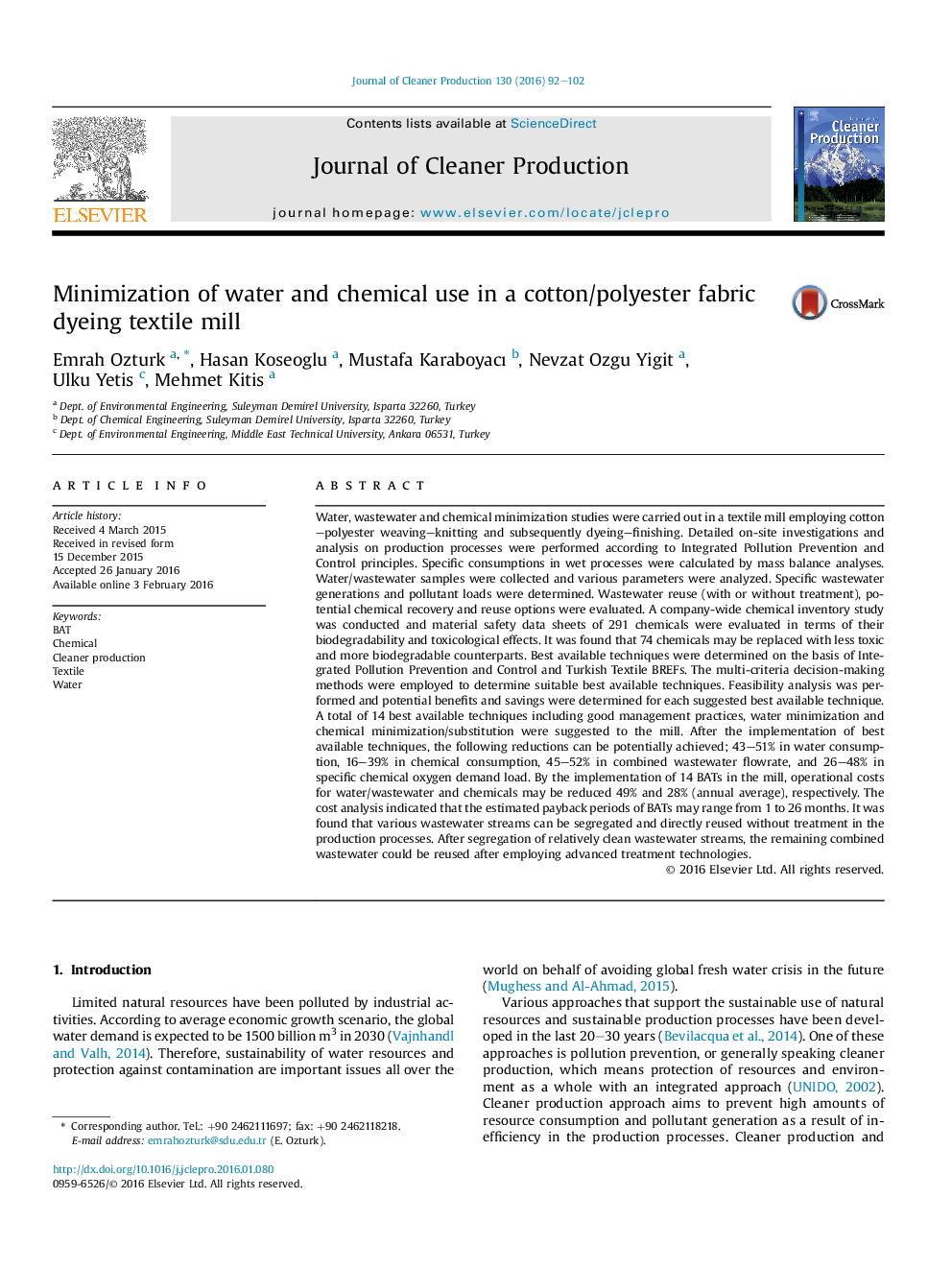| کد مقاله | کد نشریه | سال انتشار | مقاله انگلیسی | نسخه تمام متن |
|---|---|---|---|---|
| 1744040 | 1522119 | 2016 | 11 صفحه PDF | دانلود رایگان |
• Cleaner production assessment study was conducted in a textile mill.
• A total of 14 best available techniques were suggested for water and chemical reduction.
• Substitution of 74 chemicals was suggested after the chemical inventory study.
• Water and chemical consumptions can be potentially reduced 43–51% and 16–39%, respectively.
• Estimated payback periods ranged between 1 and 26 months.
Water, wastewater and chemical minimization studies were carried out in a textile mill employing cotton–polyester weaving–knitting and subsequently dyeing–finishing. Detailed on-site investigations and analysis on production processes were performed according to Integrated Pollution Prevention and Control principles. Specific consumptions in wet processes were calculated by mass balance analyses. Water/wastewater samples were collected and various parameters were analyzed. Specific wastewater generations and pollutant loads were determined. Wastewater reuse (with or without treatment), potential chemical recovery and reuse options were evaluated. A company-wide chemical inventory study was conducted and material safety data sheets of 291 chemicals were evaluated in terms of their biodegradability and toxicological effects. It was found that 74 chemicals may be replaced with less toxic and more biodegradable counterparts. Best available techniques were determined on the basis of Integrated Pollution Prevention and Control and Turkish Textile BREFs. The multi-criteria decision-making methods were employed to determine suitable best available techniques. Feasibility analysis was performed and potential benefits and savings were determined for each suggested best available technique. A total of 14 best available techniques including good management practices, water minimization and chemical minimization/substitution were suggested to the mill. After the implementation of best available techniques, the following reductions can be potentially achieved; 43–51% in water consumption, 16–39% in chemical consumption, 45–52% in combined wastewater flowrate, and 26–48% in specific chemical oxygen demand load. By the implementation of 14 BATs in the mill, operational costs for water/wastewater and chemicals may be reduced 49% and 28% (annual average), respectively. The cost analysis indicated that the estimated payback periods of BATs may range from 1 to 26 months. It was found that various wastewater streams can be segregated and directly reused without treatment in the production processes. After segregation of relatively clean wastewater streams, the remaining combined wastewater could be reused after employing advanced treatment technologies.
Journal: Journal of Cleaner Production - Volume 130, 1 September 2016, Pages 92–102
